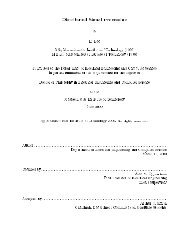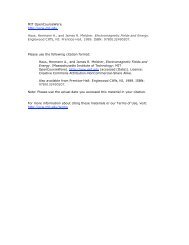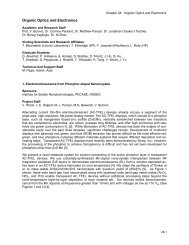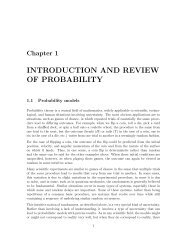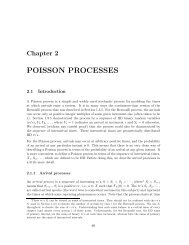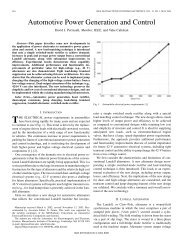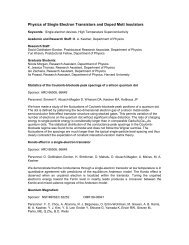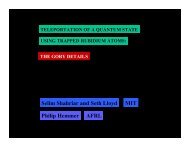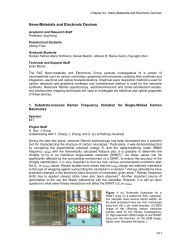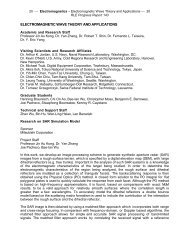RLE Progress Report No - Research Laboratory of Electronics - MIT
RLE Progress Report No - Research Laboratory of Electronics - MIT
RLE Progress Report No - Research Laboratory of Electronics - MIT
You also want an ePaper? Increase the reach of your titles
YUMPU automatically turns print PDFs into web optimized ePapers that Google loves.
egions <strong>of</strong> the ionosphere to the magnetosphere. One particular problem relates<br />
to understanding the nature <strong>of</strong> the radio frequency (RF) lower-hybrid fields that<br />
exist in density depleted regions across the geomagnetic field B 0<br />
. These regions<br />
are <strong>of</strong> the order <strong>of</strong> tens to 10 2 m across B <br />
0<br />
and extend (approximately in a<br />
homogeneous manner) to maybe 10 5 m along B 0<br />
. The RF fields in these regions<br />
have been measured (by satellites and rockets) across B <br />
0<br />
along B <br />
0<br />
at various altitudes<br />
and are essentially similar. How these fields are excited remains an<br />
unresolved problem. Two possibilities exist: electrons (from substorm events)<br />
streaming down along B 0<br />
, inside the density depleted region, excite the<br />
anomalous Doppler instability which generates the observed quasi-electrostatic<br />
fields; or ambient noise (auroral “hiss”), which exists all along B <br />
0<br />
and outside the<br />
density depleted regions, excites the observed fields inside the cavity formed by<br />
the density depleted region. Each <strong>of</strong> these excitation mechanisms needs to be<br />
explored in detail to see which one (if any) is consistent with observations. In the<br />
past year, we have continued to address the problem <strong>of</strong> wave modes in density<br />
depleted regions which is relevant to understanding the nature <strong>of</strong> the observed<br />
fields, irrespective <strong>of</strong> both their excitation mechanism and their action in<br />
energizing ions. We report on both a simplified mode analysis and variational<br />
principle for such models.<br />
Section 5 describes progress in our continuing effort to examine the use <strong>of</strong><br />
electron Bernstein waves (EBWs) for plasma heating and current drive in highbeta,<br />
near-unity aspect ratio (“spherical”) tokamaks, such as in the National<br />
Spherical Tokamak Experiment (NSTX). The importance <strong>of</strong> EBWs is that, in the<br />
electron-cyclotron range <strong>of</strong> frequencies, they are the only type <strong>of</strong> wave with direct<br />
access to depositing energy and momentum on electrons in the center <strong>of</strong> such<br />
plasmas. Here we report on our analysis <strong>of</strong> emission from EBWs in the plasma<br />
and how this relates to the excitation <strong>of</strong> EBWs from outside the plasma.<br />
Subject Index Keywords<br />
Magnetic confinement fusion (MFE); National Spherical Tokamak Experiment<br />
(NSTX); inertial confinement fusion (ICF); laser-plasma interactions; space<br />
plasmas; ionosphere; magnetosphere; stimulated Raman scattering (SRS);<br />
Langmuir decay instability (LDI); LDI cascade; electron plasma wave (EPW); ion<br />
acoustic wave (IAW); electron Bernstein wave (EBW); lower hybrid; resonant<br />
absorption modes; variational principle; mode conversion; emission.



